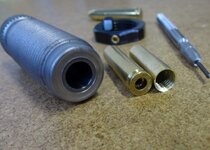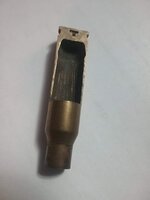- Messages
- 15
- Reactions
- 21
I am/was a millwright/machinist/supervisor/ superintendent for better part of 40+ years...started out working for my neighbor (a logger with all his own equipment back in Mn.) when I was about 12... besides working on snow machines, lawn mowers and the like at home. Put my way thru trade school (2) years....the rest as they say is just more history...I'm medically retired and not because I want to be the last few years but still enjoy the tinkering, reloading and build/repair of most makes of firearms and equipment. I think as DSM's we all have a tendency to do that...that's Dumb 5H!t mechanic....take a break and come back to it...

















